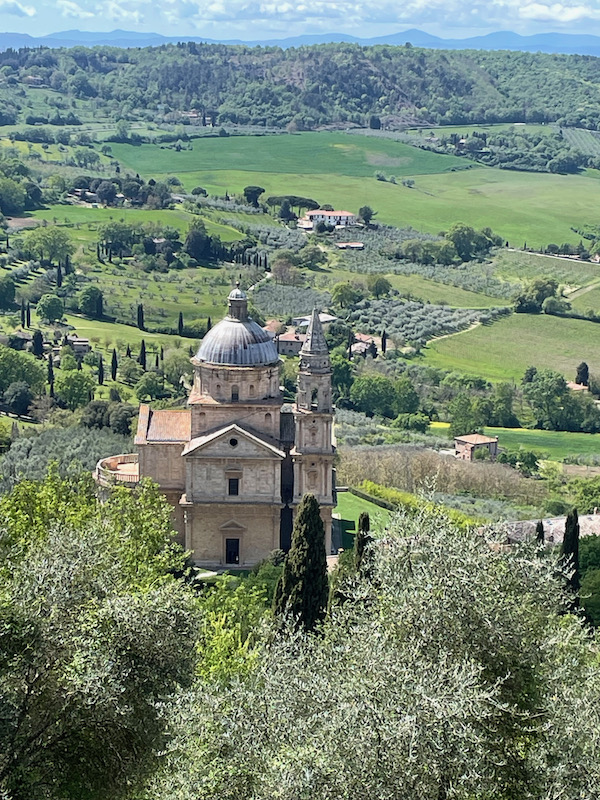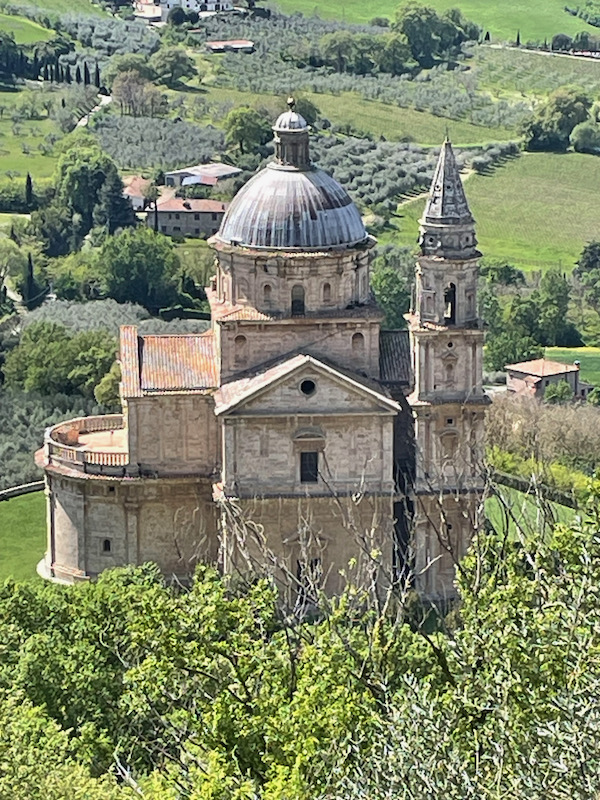Our Blog - Tuscany 2024 Trip - Montepulciano, Italy
Montepulciano stands on a ridge that divides two valleys. This Renaissance hill town surrounded by vineyards is considered one of the finest winemaking regions in the world. Parking was a bit of a problem but after awhile, we were able to park and head up the hill to the Fortress of Montepulciano.
The oldest fort here dates back to the 8th century with documents mentioning it as the Castrum Politianum. Legend has it that the castrum was built on the remains of a Roman temple dedicated to Mercury or Janus, but there is still no certain information about it. The fortress we see today dates back to around 1261, with some renovations in the 19th century. In the early 1930's, it was turned into a high school and then back into a cultural center in the last few years. We just peeked inside for a moment.
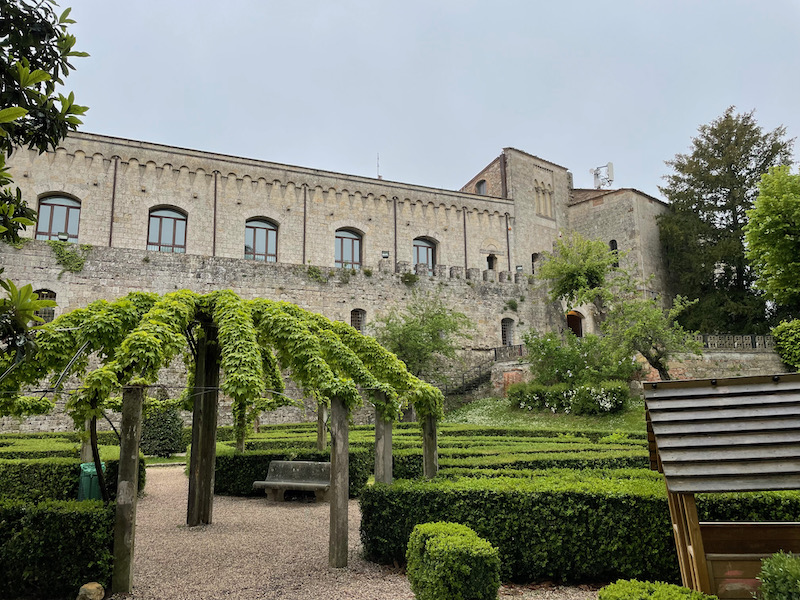
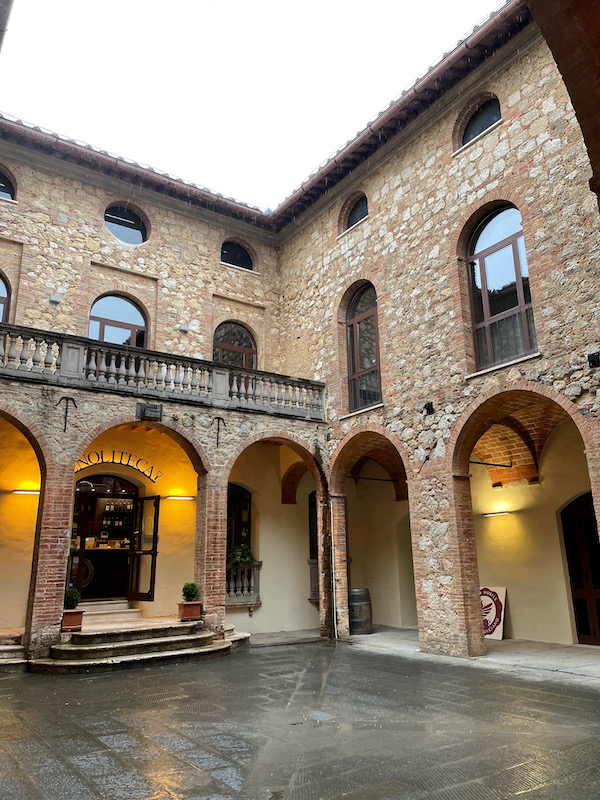
Our lunch stop in town was a great little restaurant where we tried some pici (the typical pasta of this area), some gnocchi, and then something special for dessert. They had 2 items on the menu that were "Romanian" .. a Romanian soup and a Romanian cake. We asked if there was a reason and our server mentioned that he and the chef (his sister) are Romanian, and the owners allowed them to add some things to the menu. Yum!
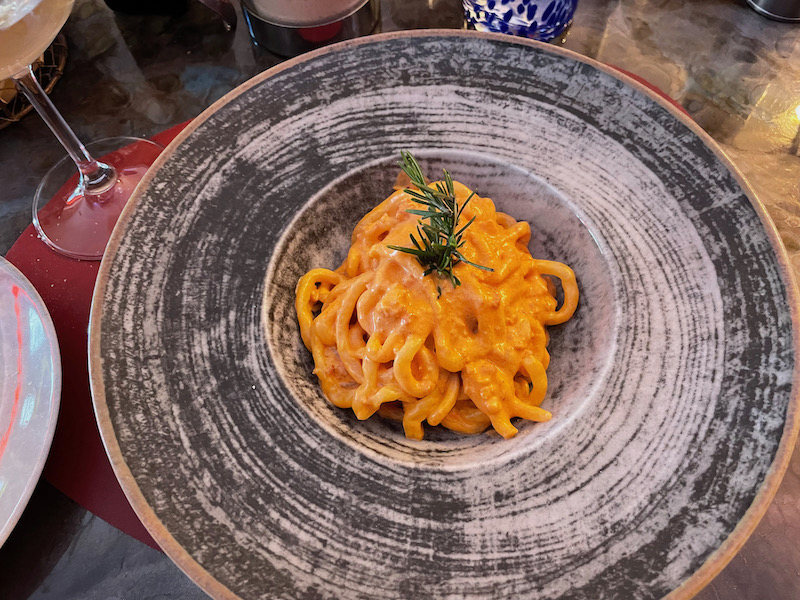
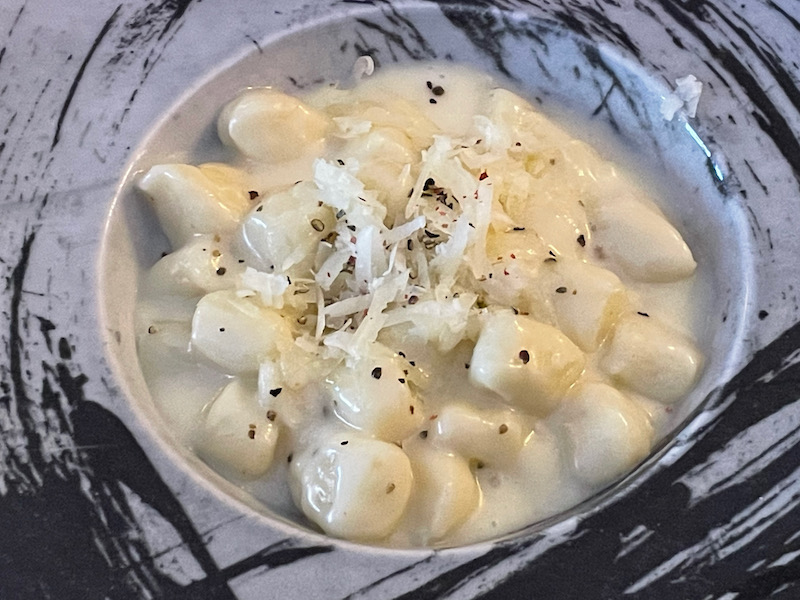
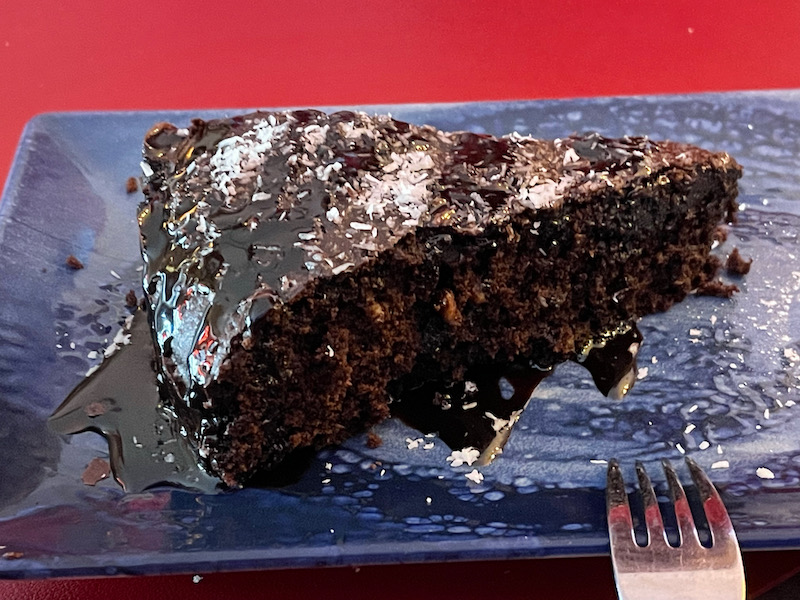
The Cathedral Saint Mary of the Assumption stands at the highest point of the town. It was built between 1586 and 1680 on the foundations of the ancient parish church of Santa Maria, but it retained the sturdy 15th-century bell tower from the older church. You will see that the tiered façade is incomplete, which gives it a very interesting look. As you can see from the fencing, it is currently closed.
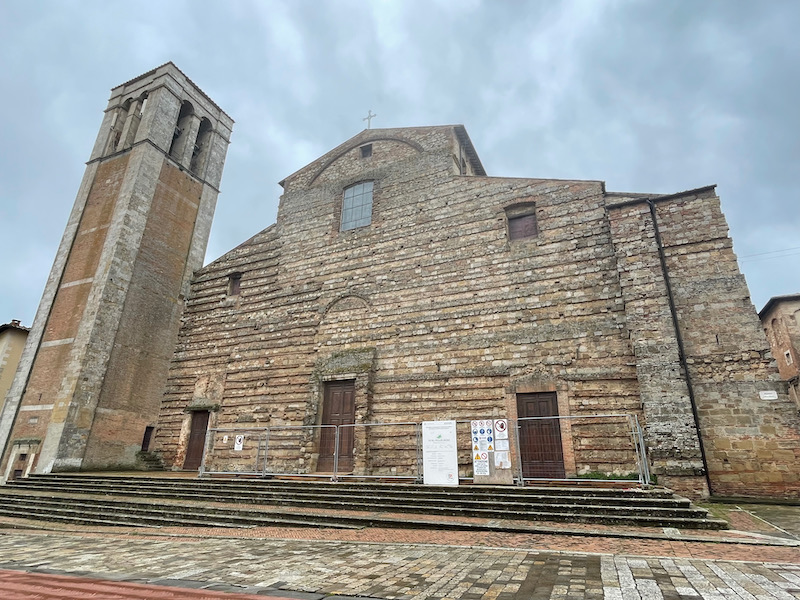
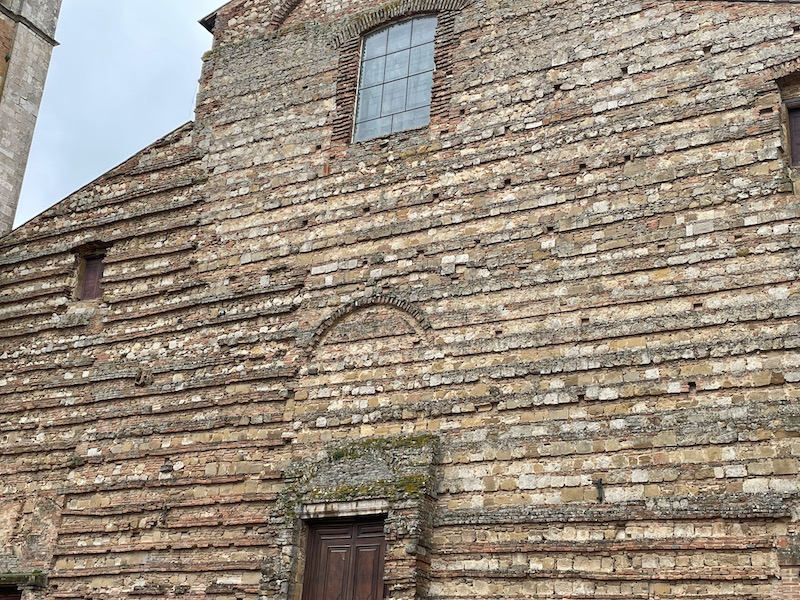
Swinging around the Piazza Grande, the main square, there are quite a few really nice buildings. The 1st picture is the Palazzo Nobili-Tarugi with a well, Pozzo dei Grifi e dei Leoni, next to it. The palace was built in the 16th century for the Nobili family, and then it was owned by the Tarugi family. The well is called the well of the Griffins and the Lions because across the top are 2 griffins surrounding 1 lion, who are touching the Medici coat of arms. Then is the Palazzo del Capitano del Popolo, which dates back to before the 15th century but had renovations to give it the current appearance in the 2nd half of the 18th century.
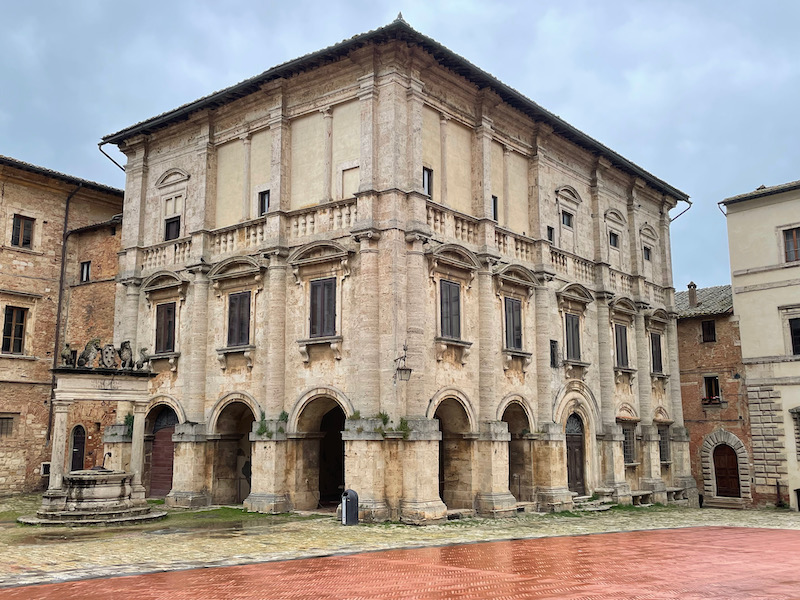
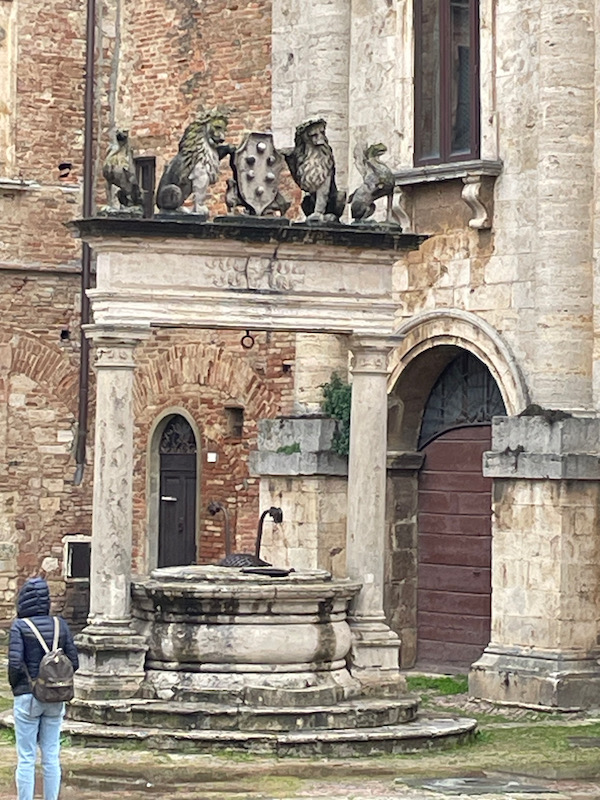
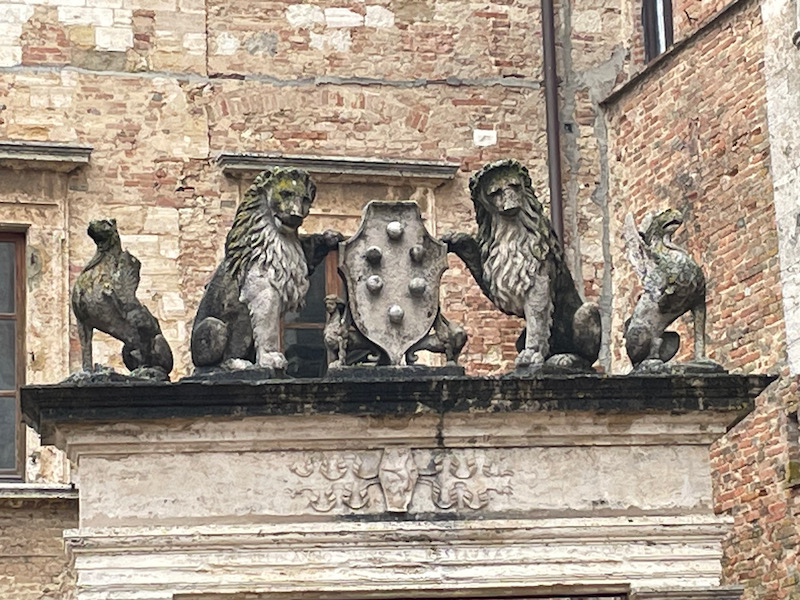
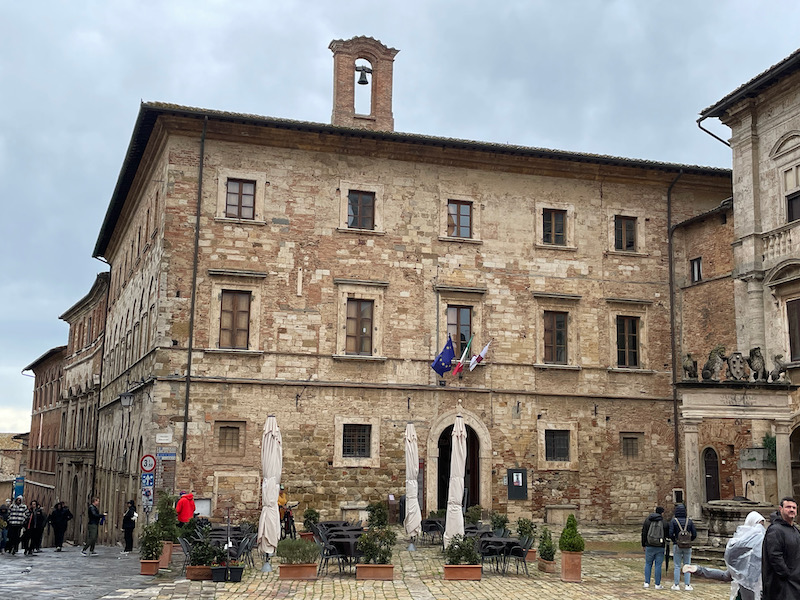
On the other side of the square is the Palazzo Comunale or town hall. The work began at the end of the 14th century and continued until 1440 with the construction of the façade, in Florentine style. In the middle is a tall tower. The ground floor of the façade is covered in ashlar, while the upper levels are in travertine.
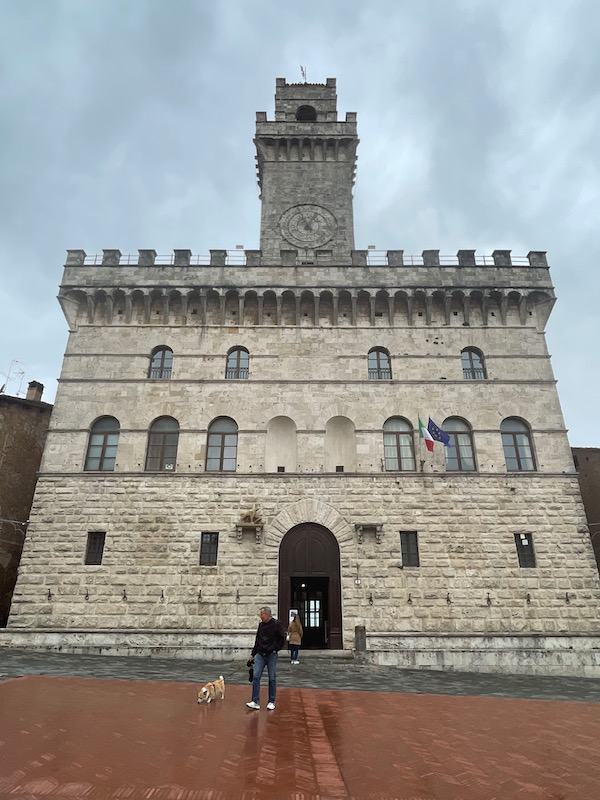
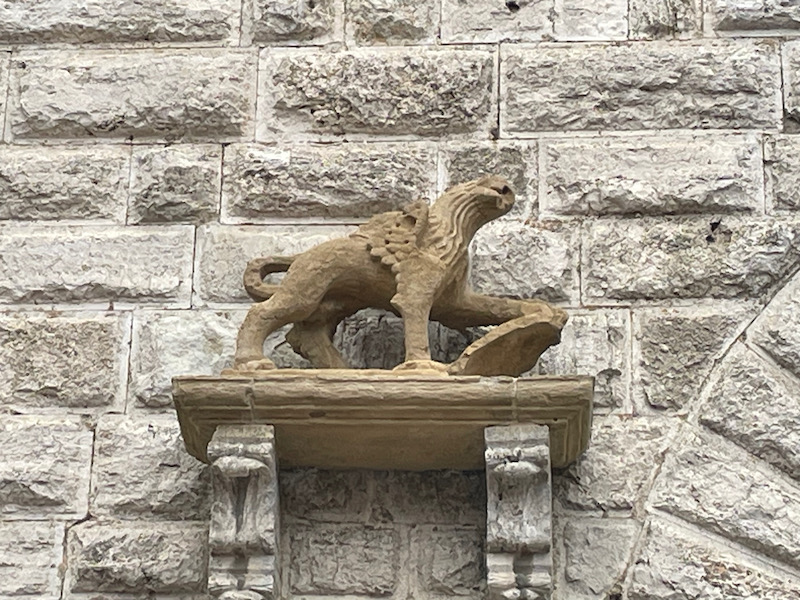
Then a few pictures of the town, which again goes up and down hills.
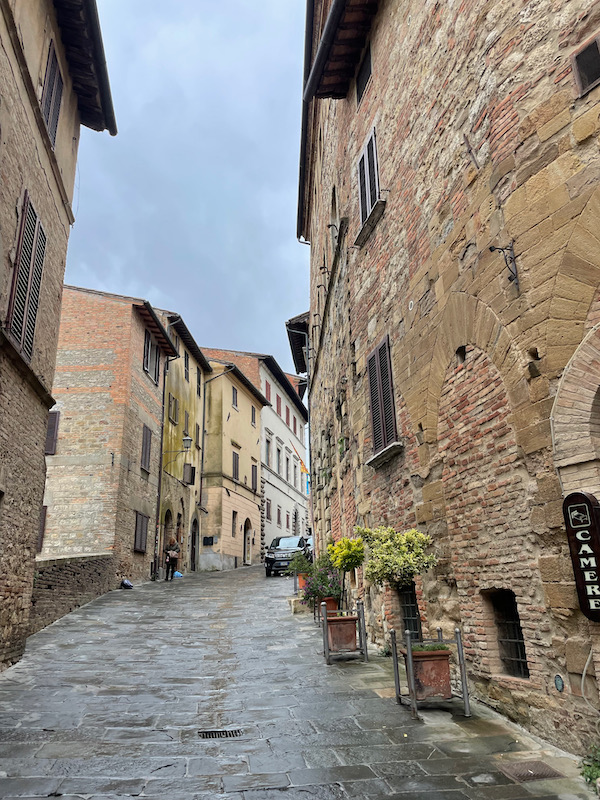
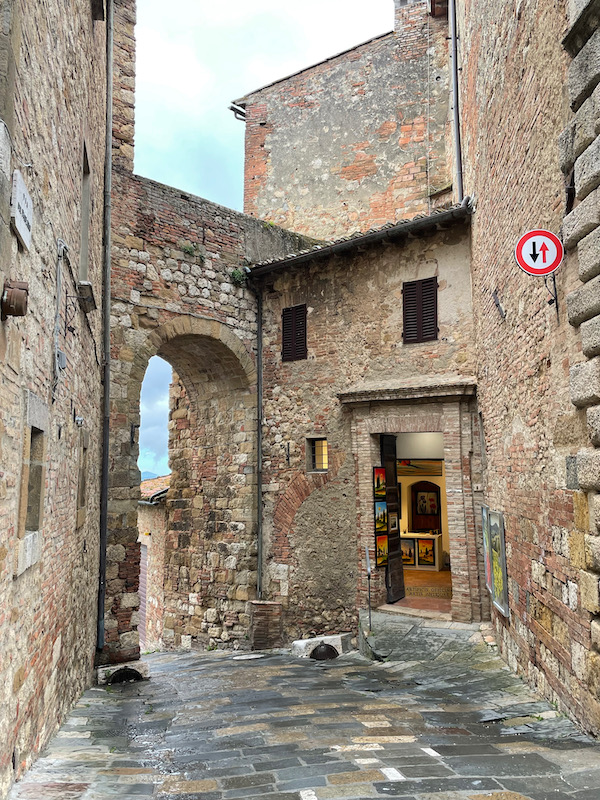
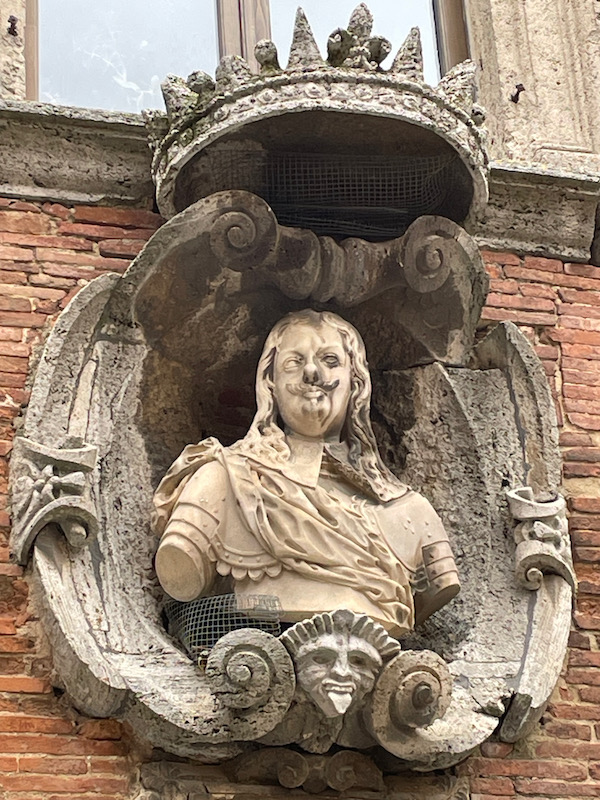
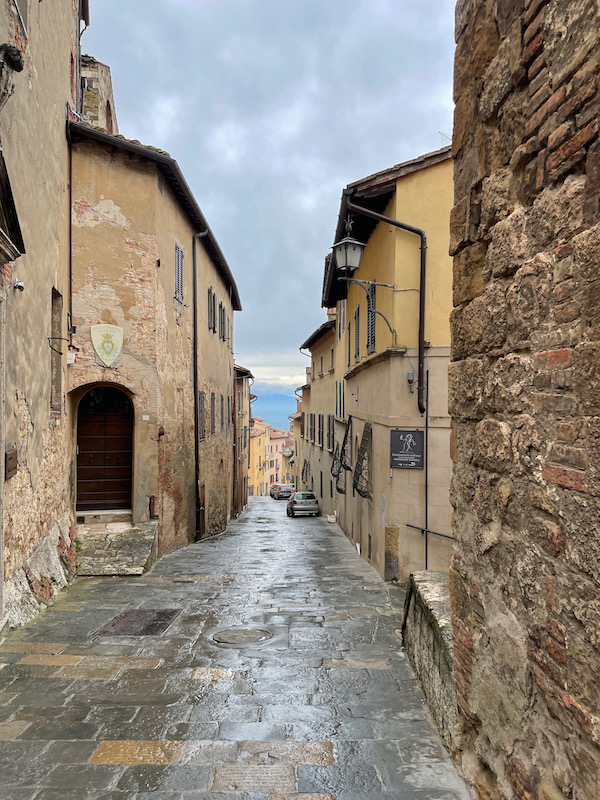
Then we came across the Chiesa di Santa Lucia or Saint Lucy's Church! Lucy didn't realize she had her own church :-) It was built in 1653, so not that old, really. The travertine façade is divided into two stories, each split into 3 parts. It has features from late-manneristic and Roman Baroque. The portal is framed by columns with Ionic capitals, the jambs of which are decorated with volute ears from which large pendants of fruit descend. Under the church, there are traces of a building dating back to the 12th century.
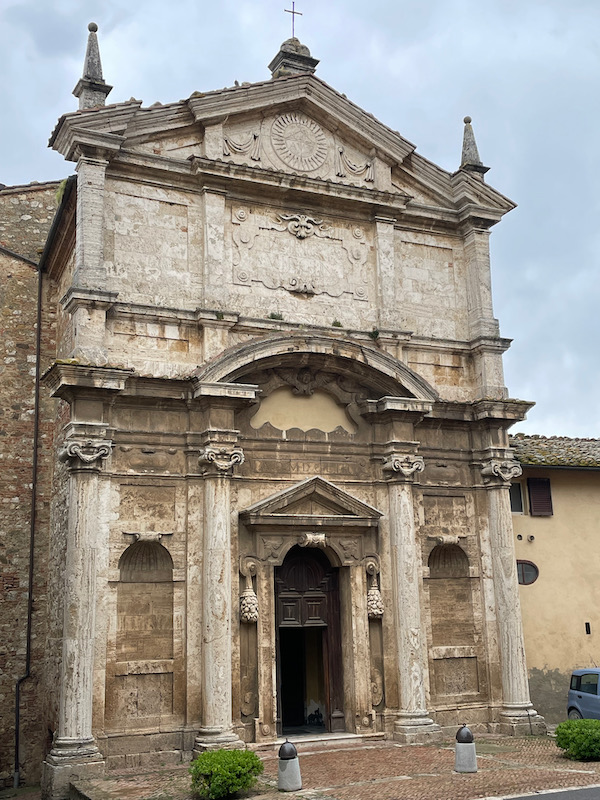
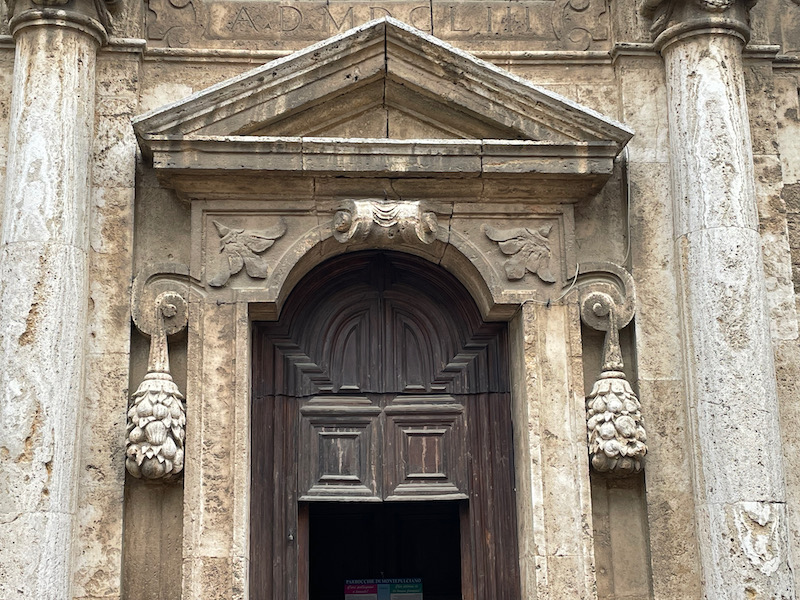
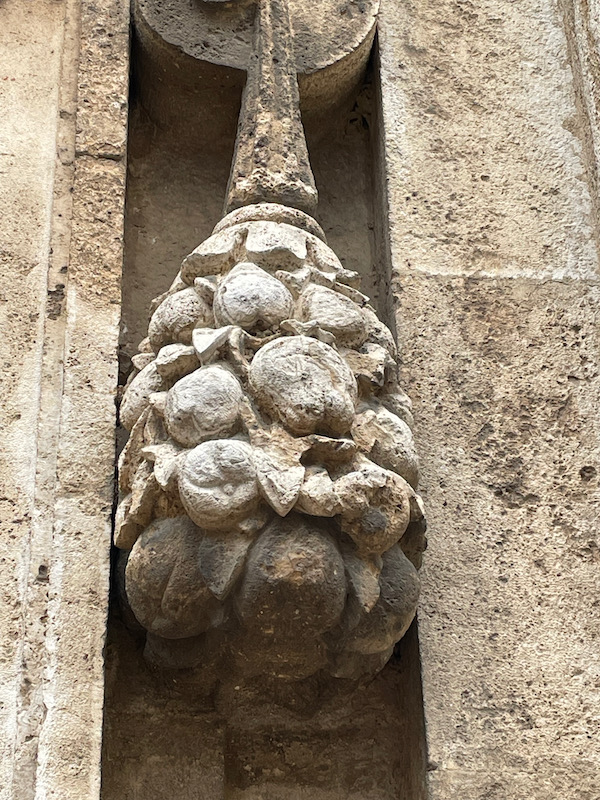
In the single-nave interior, there is a 16th-century wooden crucifix, statues of the Saints Girolamo, Margherita, Lorenzo, and Agnese. There were several altars, but notice that the first one that I show has a little cut-out in the painting that is a box with another painting on the inside. This is the 2nd one of these that I have seen.
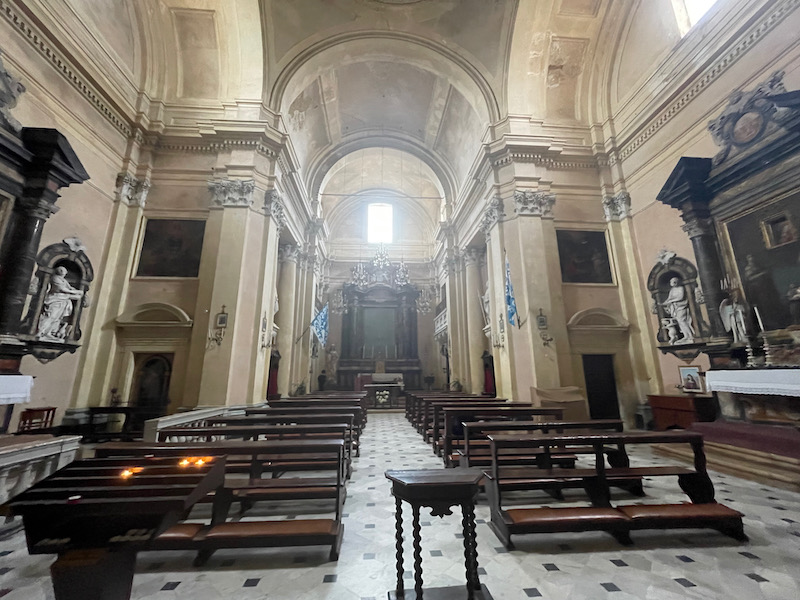
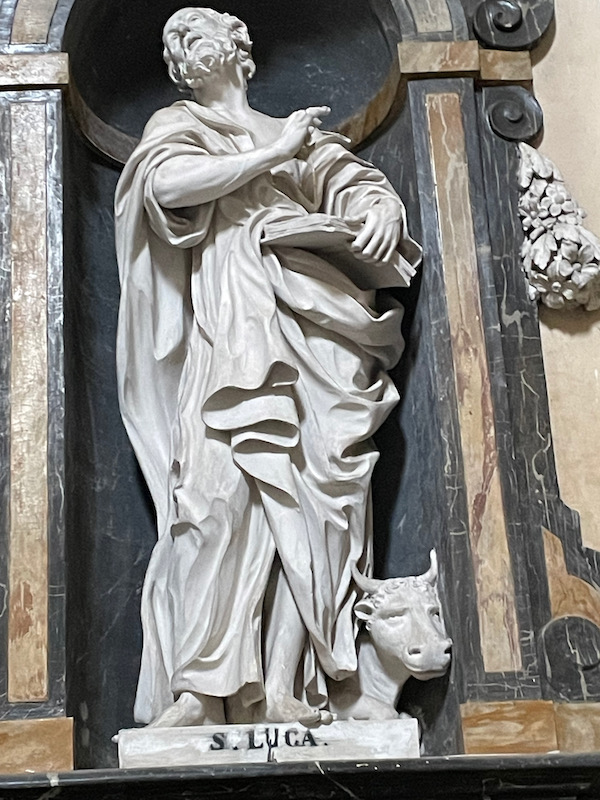
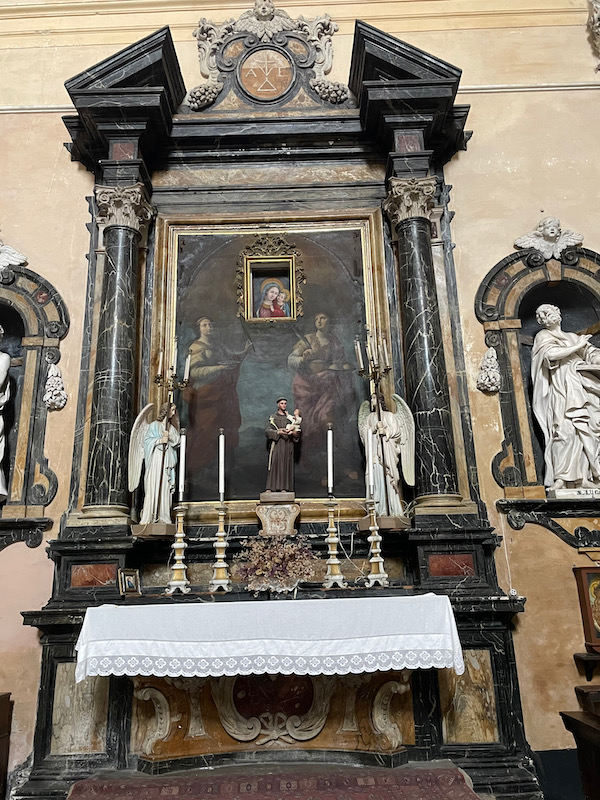
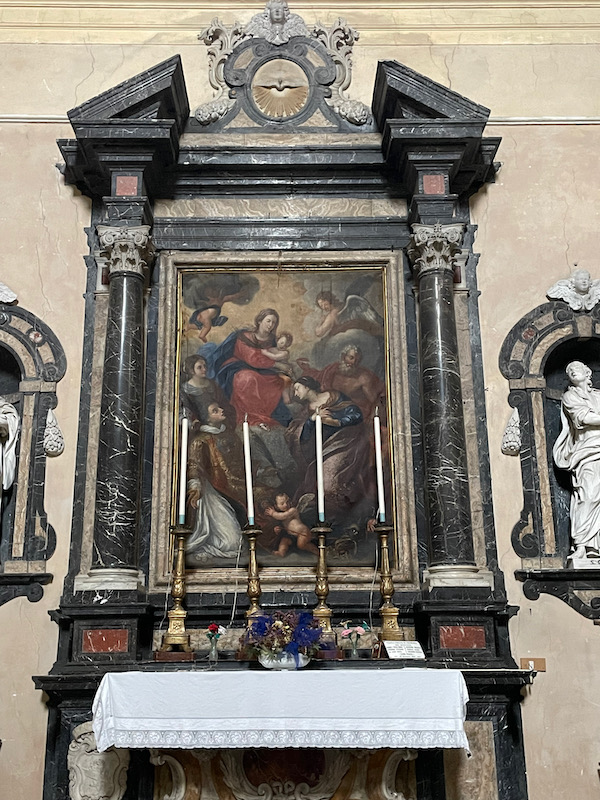
The clock tower, the Torre di Pulcinella, has a large character on top but not a character from Tuscany. Instead, this is the Pulcinella from Naples, who has gluttony as a vice and would do anything for macaroni. The statue, installed on the clock tower in 1524, is made of wood covered with sheet metal and strikes the hour by striking a bell.
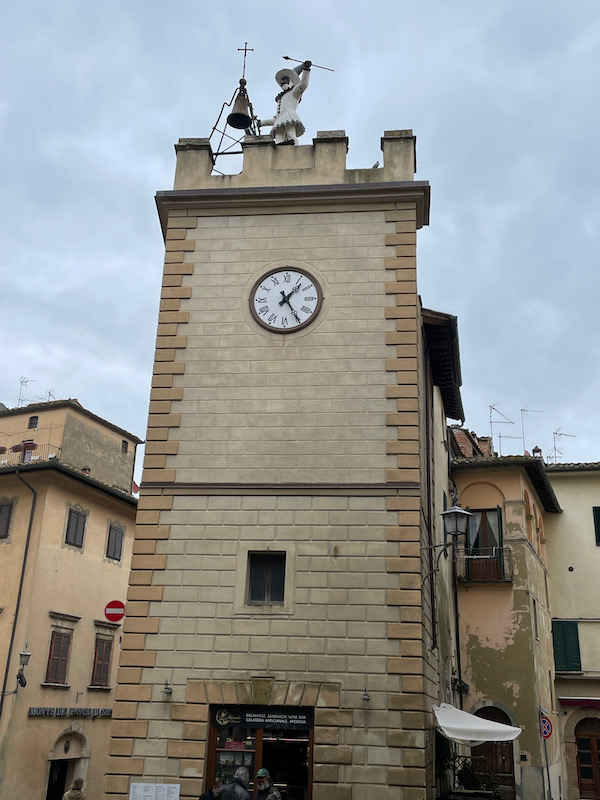
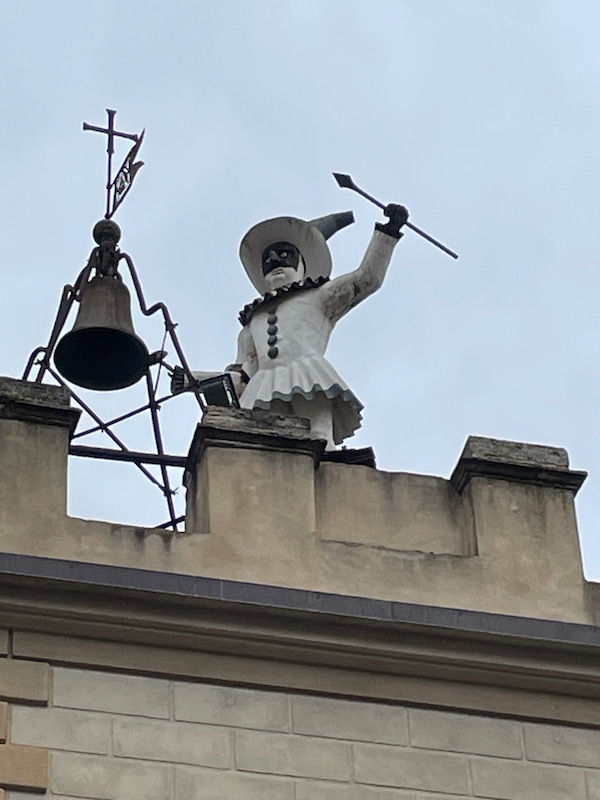
The Church of St. Augustine was founded in 1285, with the façade dating from the 15th century and the interior restored in the 17th century. The exterior is Gothic-Renaissance. The facade, made of travertine, is divided into several levels. Above the door is a terracotta bezel depicts the Virgin Mary with Child between Saints John Baptist and Saint Augustine.
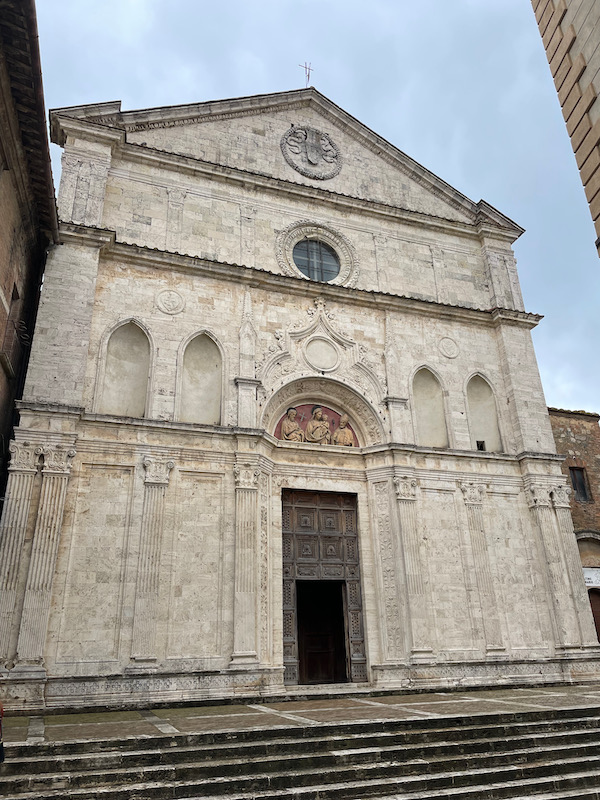
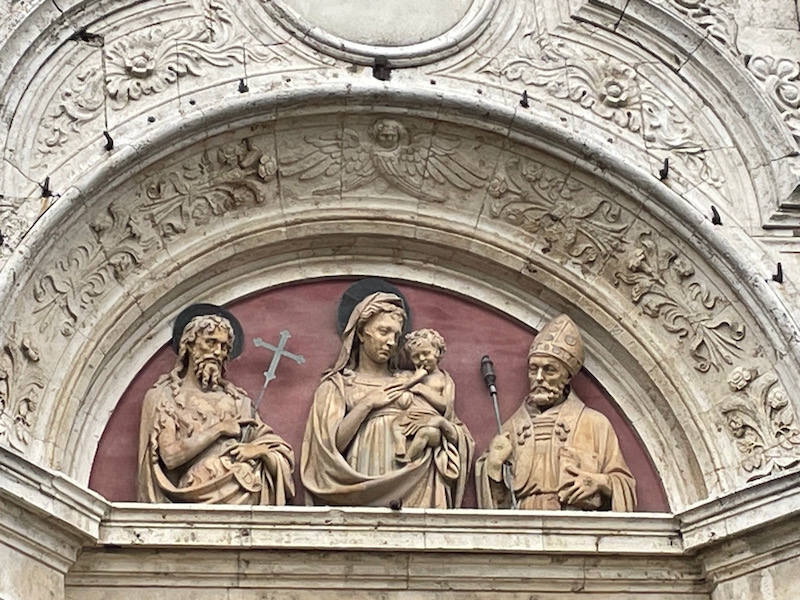
Due to the more recent renovation, the interior looks quite bright and updated. There is just a single nave, with the sides being decorated with various altars. Since 1930, the relics of the Bartolomeo Pucci-Franceschi have also been housed here. He was born here in Montepulciano, got married, and had 4 children. When the children reached adulthood (around 1290), he renounced everything and became a friar at the convent of San Francesco, where he stayed until he died in 1330. In one little side room, they had a lit nativity scene (even though it was April).
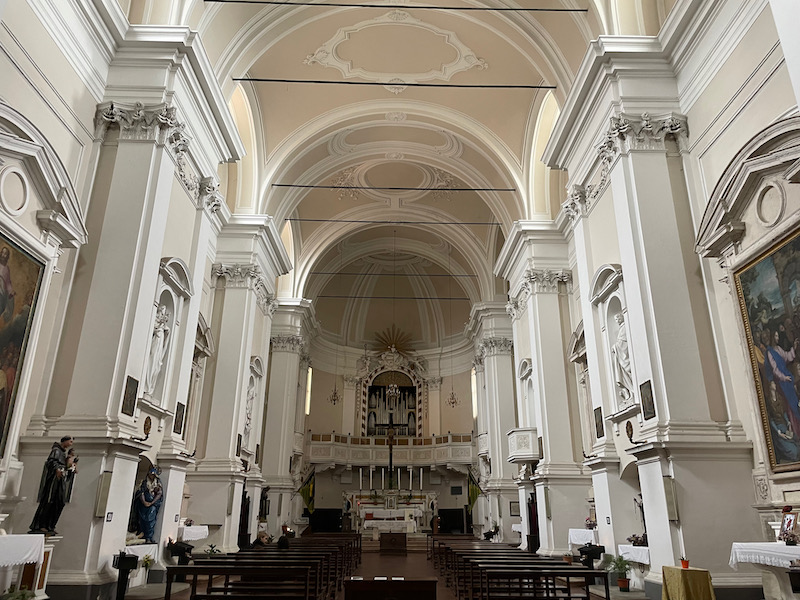
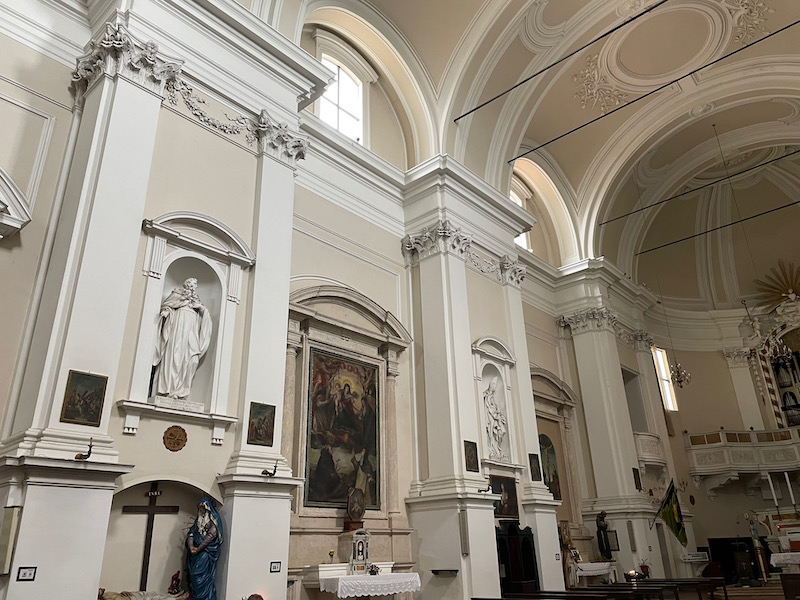

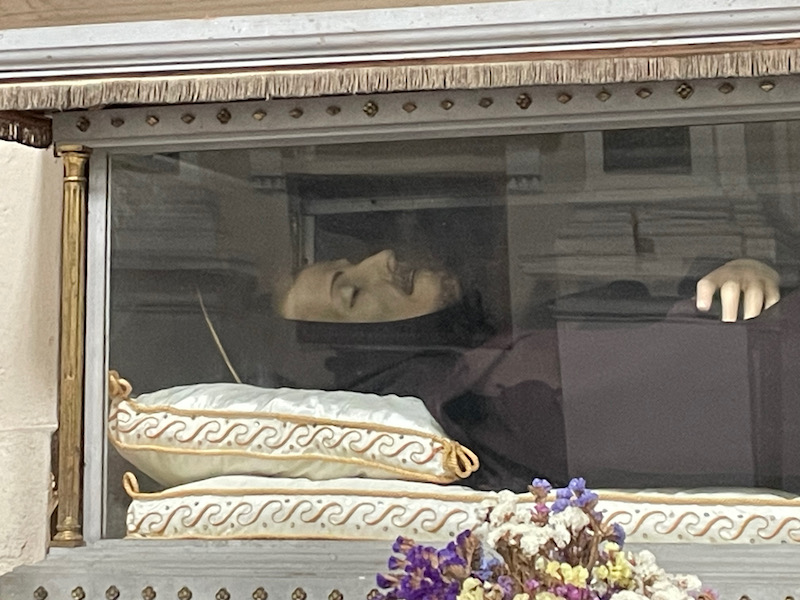
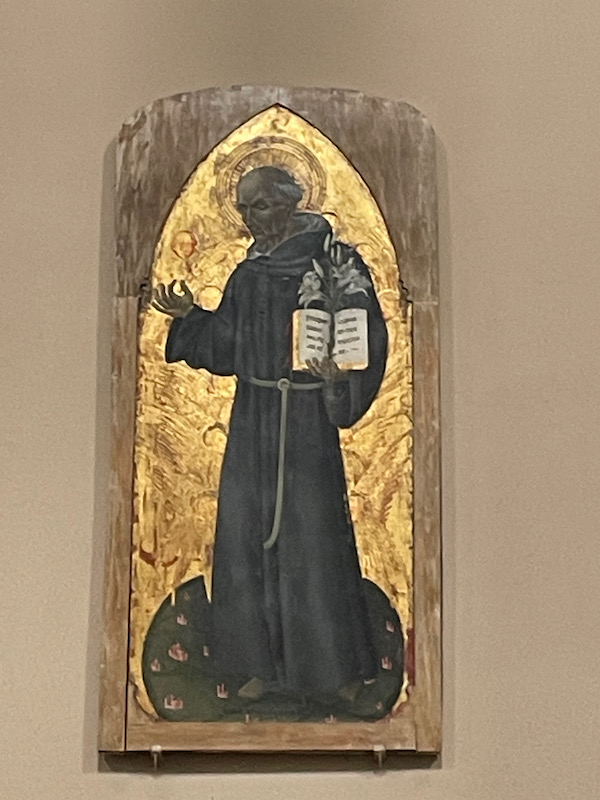
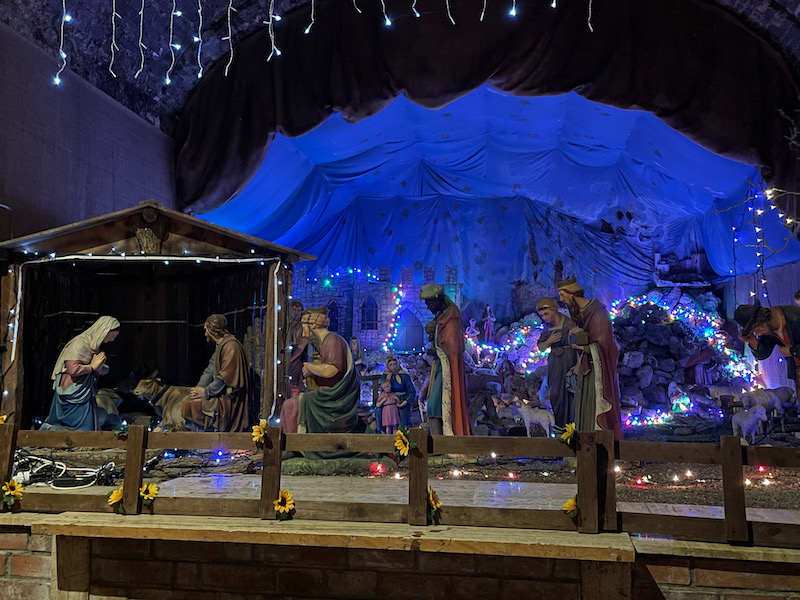
Since the wine here is well-known, we stopped for a little bit of wine tasting and a quick tour of their cellars. One of the different things that we saw here is a glass container on top of the barrels, called a "colmatore". The barrel always has to be full even when the temperature varies. To do this, wine is removed from the barrel into the glass container and then added back in as needed.
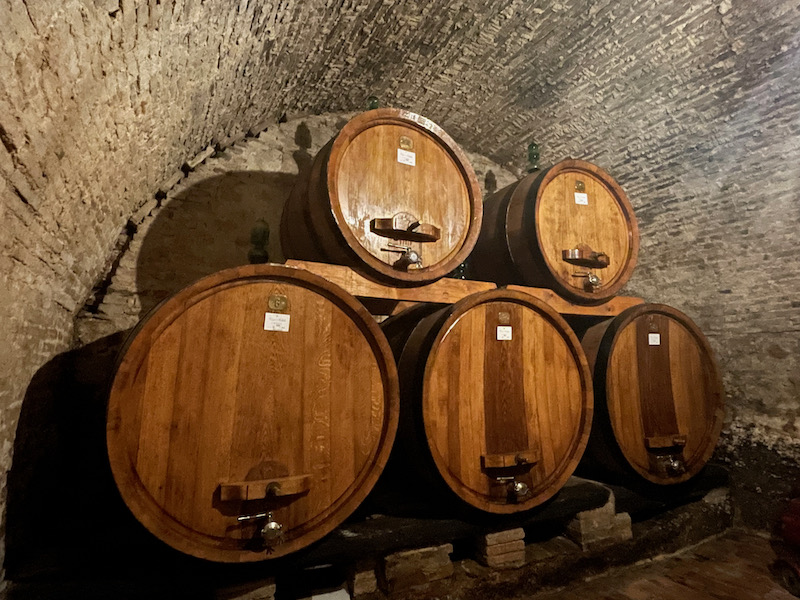
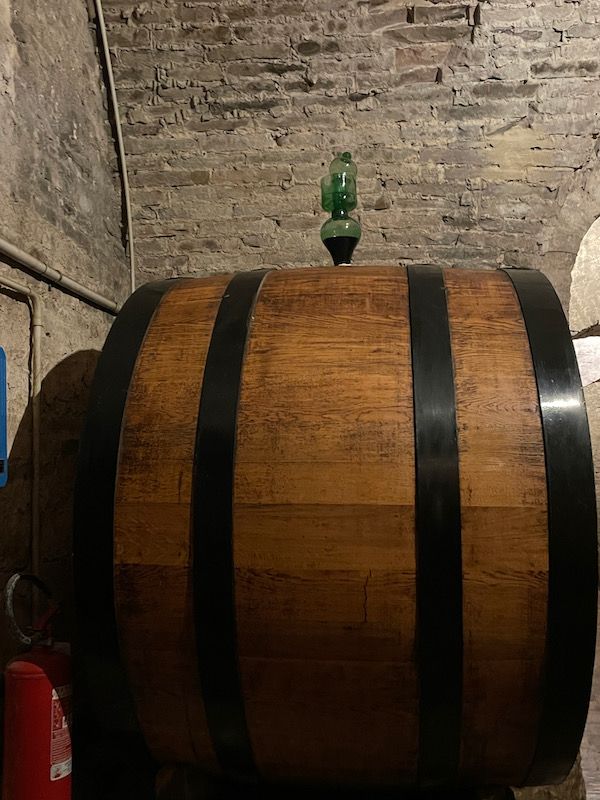
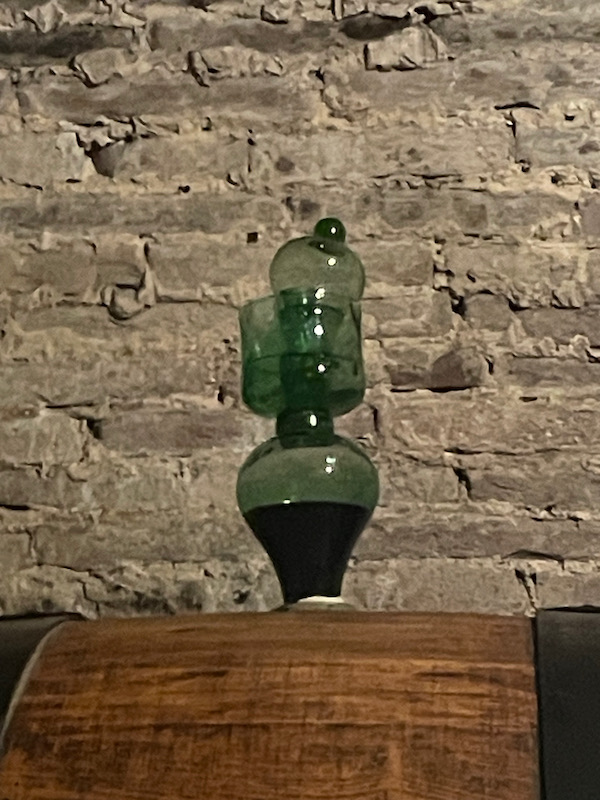
Just outside of town is the Temple of San Biagio. It was built between 1518 and 1548 using travertine blocks taken from the nearby quarries of Sant'Albino. It has a central dome and a semicircular apse, inside of which is the sacristy. On the opposite side are placed two bell towers, but only was was completed. We also got a quick peek of it from the town, we didn't go down to visit it.
